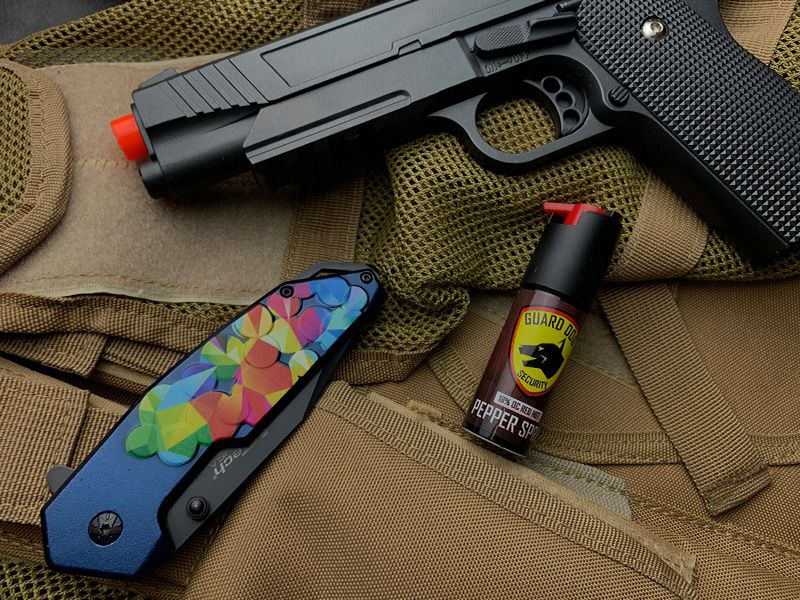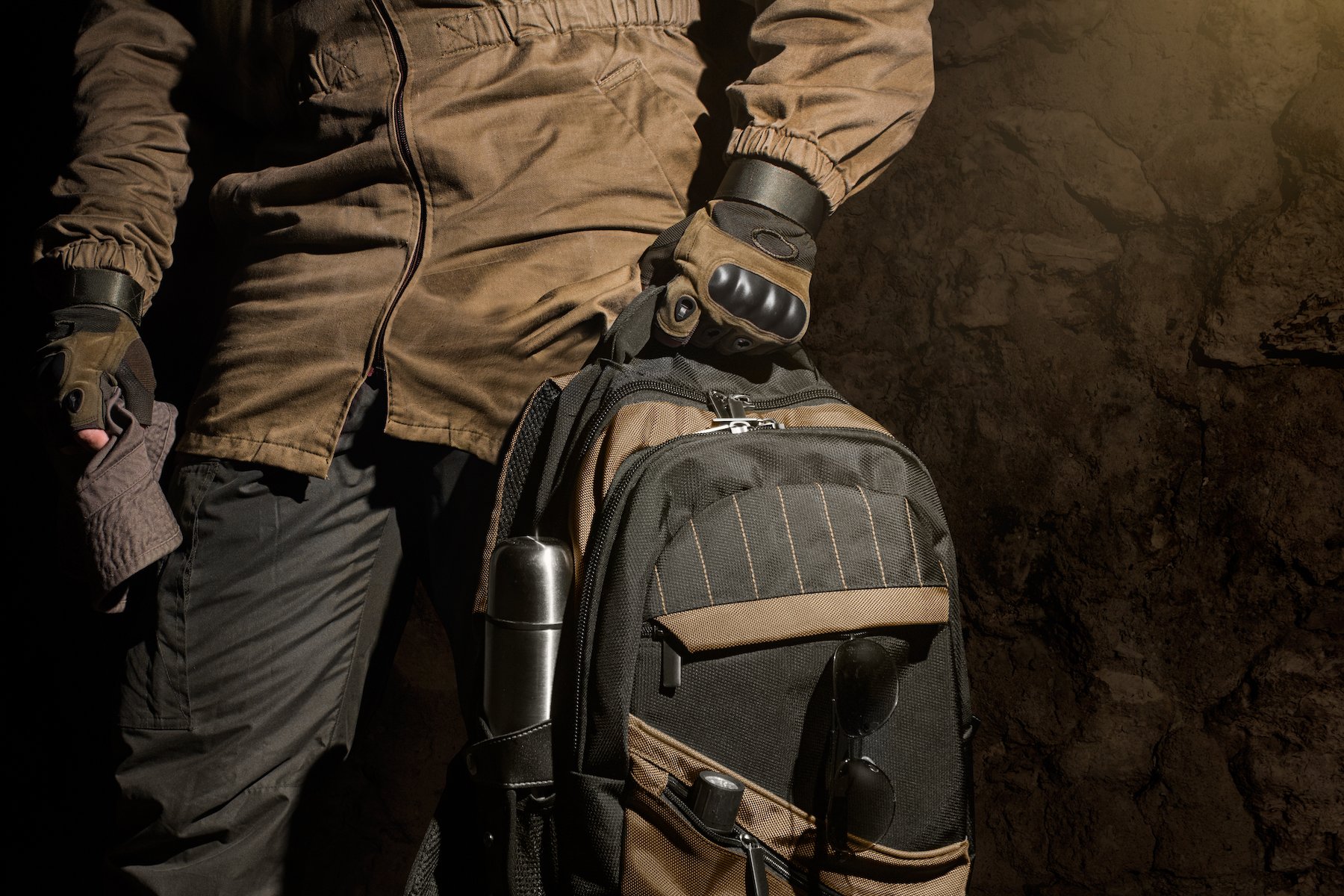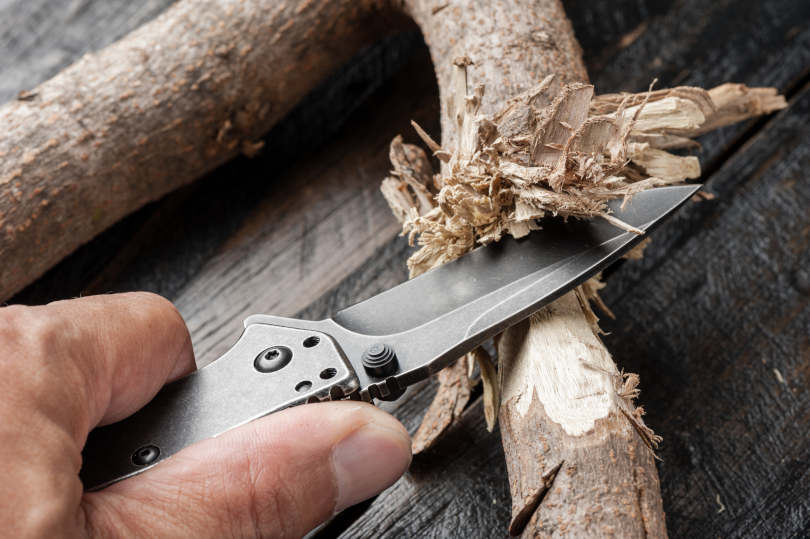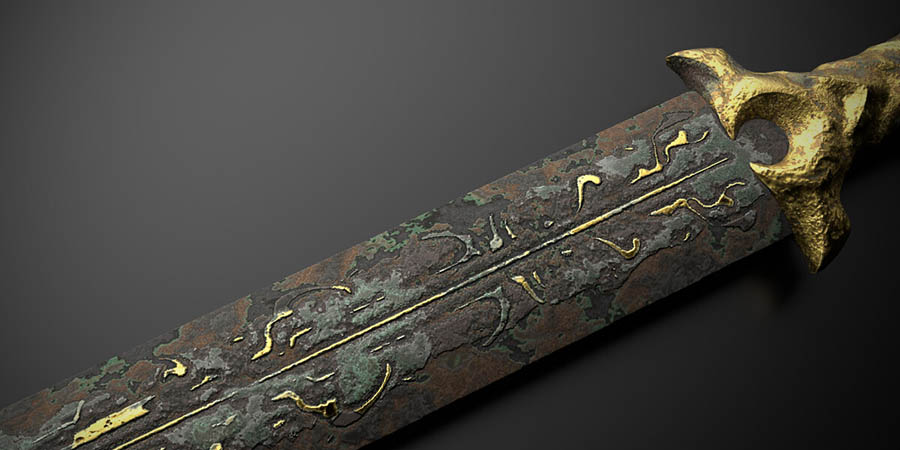Men have been stabbing, cutting and slashing each other for thousands of years. In fact, it’s believed that the first swords started to appear some 3,700 years ago. That is, as soon as man learned how to shape metal, he has been using that knowledge to kill. Over the centuries, swords became increasingly sophisticated – and increasingly deadly.
Often, the design was adapted to counter advances in defenses, in particular the type of shield a soldier might carry on the field of battle or the style of armor he would wear. At some points in history, stabbing swords were in style. At other times, weapons better-suited to slash and cut were in fashion. And, of course, the style and design of swords was different the world over, even if their general purpose was the same – to maim and kill as efficiently as possible.
So, from the sword that helped Rome conquer the known world to the Asian swords that were far more than simple tools or war, here we present 16 of the most important – and most deadly – handheld weapons of all time:
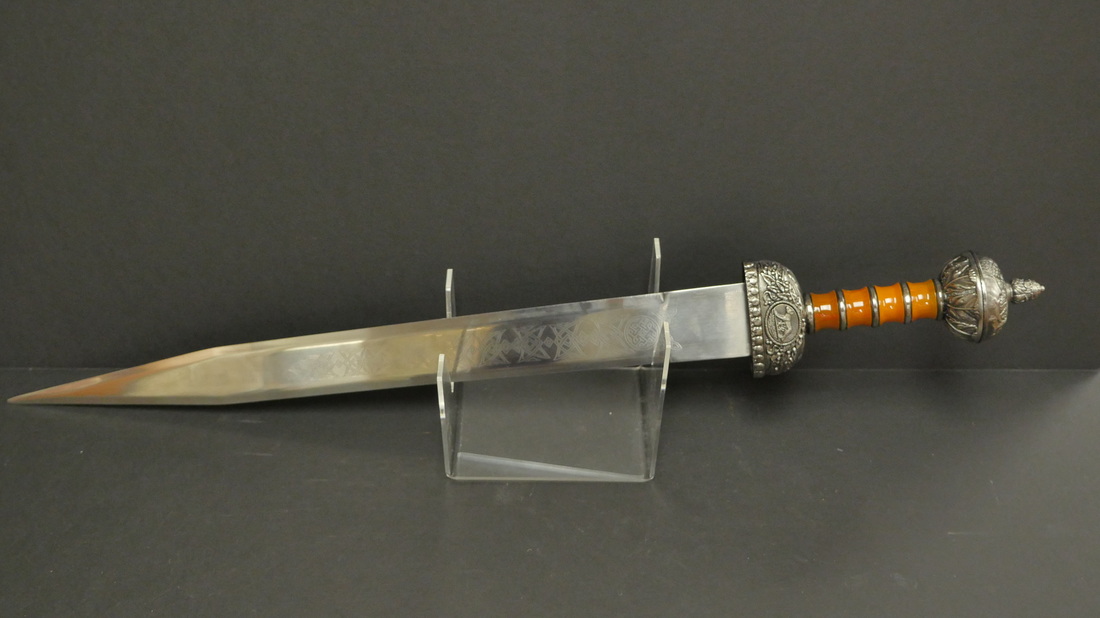
16. The Roman gladius was the gave us the word gladiator and was used to thrust and stab Rome’s opponents to death for more than 800 years
According to the ancient historians Livy and Polybius, the gladius wasn’t a Roman invention. Rather, the Roman Army decided to copy the swords used by the Celt mercenaries who fought for Hannibal.. Swordsmiths would fuse together stripes of low-carbon steel to produce the blade, with a channel down the middle to add to the strength. The grip was only big enough for one hand, and sometimes an ornate hilt or even an engraving was included. It’s believed that the normal soldiers wore their gladii on one side, while their centurion wore it on the other to set him apart.
Though it could cut off an enemy’s limbs if it was sharp enough, the Roman gladius was largely a thrusting weapon. At the start of a battle, Rome’s soldiers would throw their pointed javelins at their enemies. Only then would they advance. Once close enough, they would swing their shields and then try and stab an opponent with their gladius. Due to a lack of battlefield medicine, a simple stab in the abdomen almost always proved to be fatal, though Rome’s soldiers weren’t above striking a low blow by swinging their gladii beneath their enemies’ shields and taking out their knees.
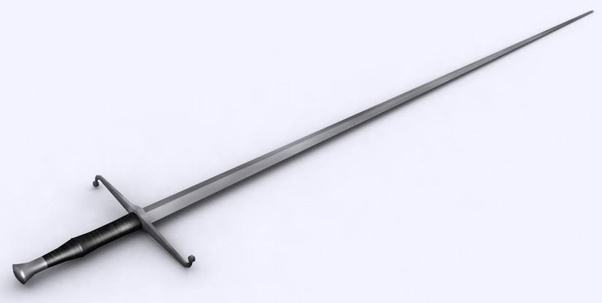
15. The Estoc sword was created to find a way through chain-mail and other armor and were used to deadly effect on the battlefields of Medieval Europe
Estoc swords were long, with two-handed grips. They were blunt along the edges but had a sharpened point. This design meant that a swordsman could grip the weapon with two hands and put all their weight behind it as they thrust downwards into an opponent’s Armour. Even if he missed a gap in the chain-mail, the power behind the thrust, combined with the strong point meant that the armor was often penetrated anyway. If that didn’t do the trick, then it certainly disabled an opponent, and he could then be finished off with a sidearm such as a dagger.
But estoc swords weren’t only used to kill well-armored soldiers on the Medieval battlefield. They were also used by knights in tournaments. They could be used like normal swords for one-to-one fights, but, thanks to their lack of a sharp edge, they wouldn’t do any real damage unless they were thrust forward. At the same time, estoc swords were also popular with huntsman. Though far riskier than using a bow and arrow to hunt bears, boars or wolves, an estoc sword allowed the hunter to get up-close to a wild beast and kill it with a single thrust.
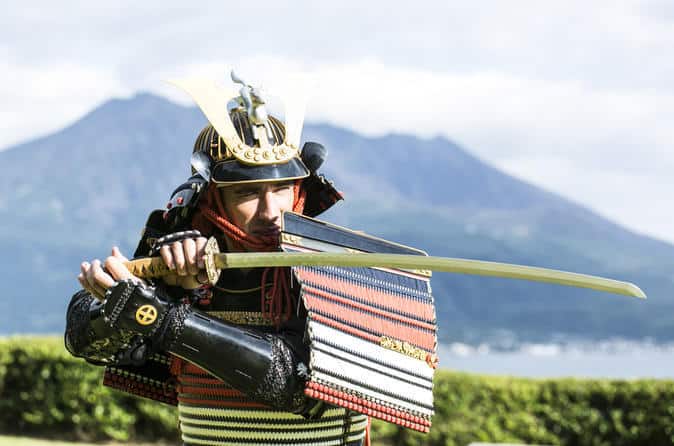
14. The Katana was more than just a weapon to a skilled Samurai, it was a symbol of his social class and his unshakable moral code
The katana became popular from 1100 onward as men began fighting at increasingly close quarters. This meant that the slightest delay in drawing your weapon could prove fatal. The katana could be worn on a special sash, with the blade pointing away, and a skilled samurai could both draw it and attack an opponent in a single move. While the length varied over the ensuing centuries, the katana largely remained the signature weapon of the samurai – until, that is, an 1876 law ruled that only former samurai lords and police officers could wear the weapon in public.
The katana continued to be worn and wielded by officers in the Japanese Imperial Army well into the 20th century. Far from being merely a ceremonial piece, it was used in battle for close-quarters fighting in the Second World War. Above all, the sword was respected and feared due to the sharpness of the blade. Indeed, military historians often credit the katana as being among the most devastating weapons ever forged. Perhaps that’s why it was banned in Japan in the post-war years, and even martial arts that had traditionally been used to train swordsmen forbidden between 1945 and 1953.
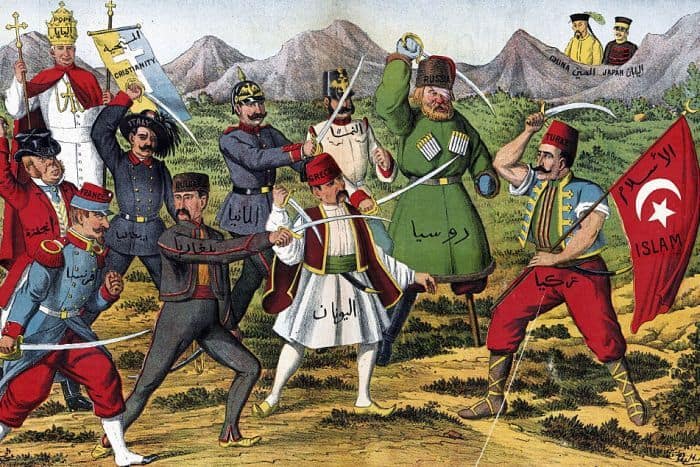
13. The Kilij was the go-to weapon of more than one Asian empire, with its awesome slashing power complemented by an iconic look
Originally developed by Turkish swordsmiths – the word kilij literally means ‘sword’ in Turkish – the weapon spread in popularity throughout Central Asia and large parts of Eastern Europe. A number of cultures adopted it as their own, discarding traditional straight-bladed weapons for the more effective curved sword. Above all, it was used to slash and cut, though it could occasionally be used to thrust, giving the kilij an advantage over the Persian shamshire sword, for example. The secret lay in the double-edged tip. This flared out at the very top, helping make the end of the weapon stronger and more powerful.
It was said that a skilled warrior could use a kilij to cut through human bone in a single swipe. And it wasn’t just effective – it looked good too! According to some historians, Turkish warriors liked the look of the sword, believing it made them appear both more fearsome and more elegant than enemies with straight blades. By the mid-19th century, however, the weapon had fallen out of favour. Keen to modernize and keep up with European powers, the Turkish Army abandoned the kimij, equipping its soldiers with western-style sabers instead.
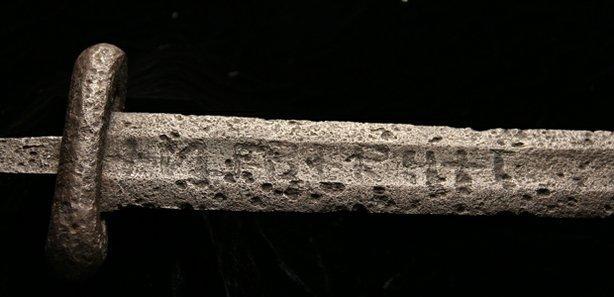
12. The Ulfbehrt swords were so strong that any Viking warrior who wielded one was often feared to be a demi-god
Luxury items are by no means a new invention; more than 1,000 years ago, the Vikings were producing ‘designer swords’. And, above all, those weapons crafted by Ulfberht were the most coveted of all. What makes these swords so fascinating to historians is the way they were forged. Despite being made between 800-1,000AD, the weapons were made by heating iron to a temperature of around 3,000 degrees Fahrenheit. How this was possible is the source of much debate – after all, the technology required to forge iron at such high temperatures didn’t become commonplace until the Industrial Revolution, 800 years later.
The skilled Viking blacksmiths were, quite literally, a millennium ahead of their time. The ‘Crucible steel’ they produced meant that Ulfberht swords were both flexible but almost unbreakable. What’s more, they would have been extra-lightweight, especially compared to other weapons of the age, and the blades would have stayed razor sharp. According to some accounts from the Viking times, any warrior who wielded an Ulfbehrt sword on the battlefield would have been seen as having quasi-supernatural powers. The weapons were usually buried with their deceased owners, giving them elevated status in death as well as in life.
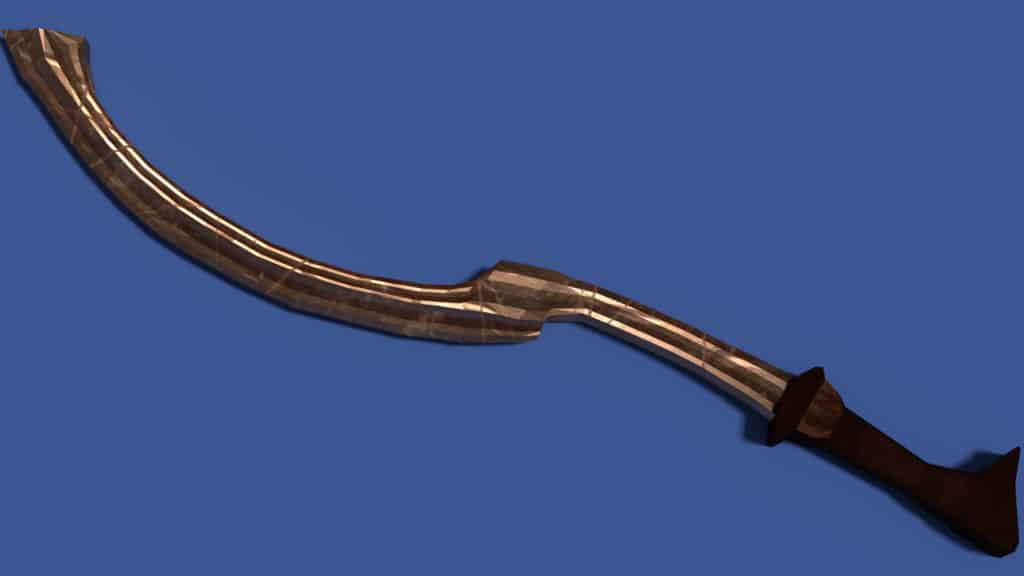
11. The Khopesh was crafted to be both a bludgeon and a cutting weapon, used to beat and slash Egypt’s enemies to death
It’s believed that the Egyptians started arming themselves with swords more than 4,500 years ago, preferring their flexibility to more cumbersome axes. Certainly, the khopesh was relatively lightweight and easy to handle. At around just 60cm long, the curved blade was only sharpened on the outside and would have been used to cut and slash at an enemy. At the same time, the dull side of the blade would have been an effective bludgeon, while the hooked shape would have allowed a soldier to disarm his opponent and then attack him in a single move.
Very little is known about why, in around 1,300BC, the khopesh started going out of fashion. Most likely changing military tactics meant that straight blades became more effective. But even if it was replaced as the main weapon-of-choice among Egypt’s soldiers, it remained an important ceremonial weapon for several more centuries. Tutankhamun wasn’t the only pharaoh to be buried with his khopesh by his side (in fact, the boy king had two of the weapons in his tomb), plus this type of sword continued to be depicted in hieroglyphics up until 2000BC and even mentioned on the Rosetta Stone.
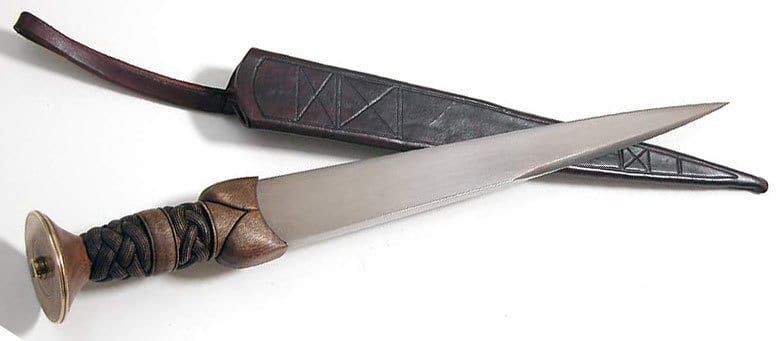
10. The Highland dirk was an essential tool for almost every Scotsman and came into its own when fights with the English got up-close and personal
In the 16th century, not every man in the Scottish Highlands could afford to have his own sword. But that doesn’t mean not everybody was armed. Almost ever male of fighting age carried a specially-crafted sidearm known as a dirk. A long thrusting dagger around 12 inches in length, it was a soldier’s go-to weapon when fighting got up-close and personal. What’s more, it became far more than a weapon to the Scots, particularly after the English banned them from wearing it after the Battle of Culloden.
In the right hands, the dirk was perfect for close-quarters combat. Its sharp blade could penetrate basic armour, and it was relatively lightweight and easy to handle, making it ideal for melees, as the English found out to their cost during the first half of the 18th century. Even richer Highlanders who could afford proper swords would still carry dirks, both during peacetime and onto the field of battle. What’s more, a Scot would place a hand on his blade whilst swearing an oath. It was believed that, if he were to then break his word, he would face the wrath of angry spirits.
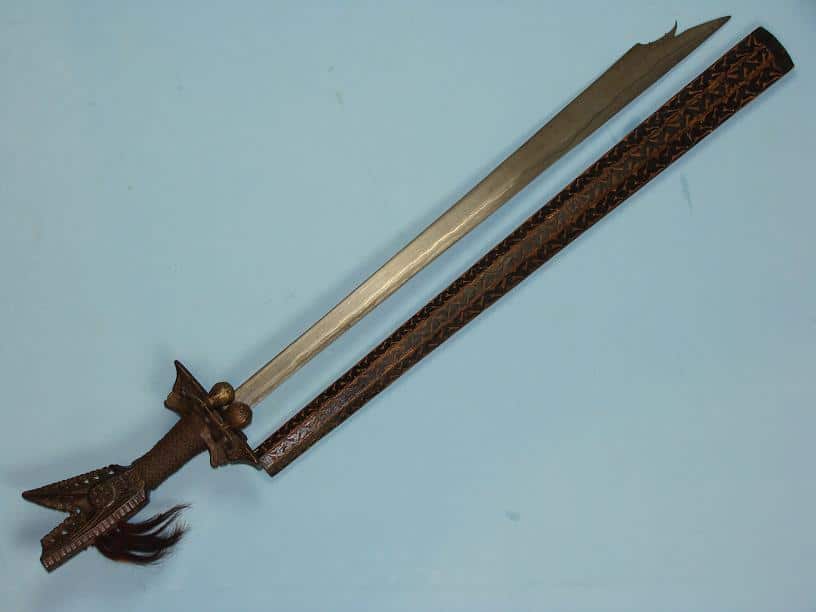
9. The Kamplian’s unique double-tipped blade made it a fearsome, deadly weapon – as Portugal’s most famous explorer learned the hard way
In April 1521, the Portuguese explorer Ferdinand Magellan and his men were attacked by the ruler of the Mactan people, Datu Lapu-Lapu. The native Filipinos stormed into the historic Battle of Mactan wielding a unique, and truly terrifying weapon, the kamplian. Its tip would have been unlike anything the Portuguese sailors would have ever seen before. That tip helped the tribe to victory that day. Indeed, according to local legend, Magellan himself was cut down by a kamplian
Around a meter long, the kamplian is a single-edged sword with a sturdy wood handle. But it’s the end that makes it unique. The tip of the weapon is bifurcated; that is, it splits in two, with a main tip and then a protruding spikelet. According to local lore, the end was originally crafted to resemble a fearsome creature’s open mouth. True or not, the unique design does make the kamplian a highly-effective stabbing weapon. Any enemy soldier pierced by the double-tipped end would have almost certainly perished, especially back in the 16th century when battlefield medicine was almost non-existent.
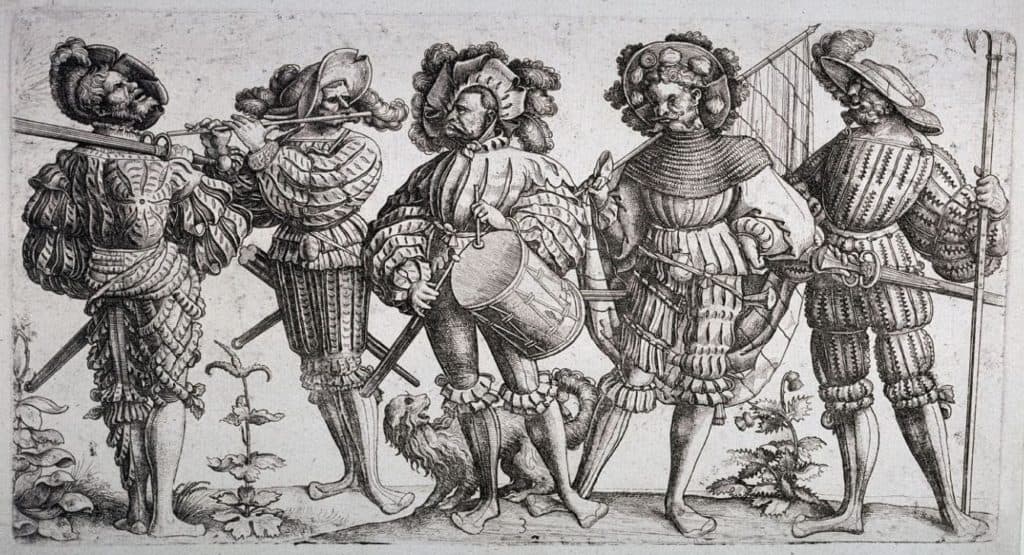
8. The Katzbalger may have lacked a sharpened tip, but that didn’t matter when you were slashing at an opponent’s legs on a crowded European battlefield
In Renaissance-era Europe, bands of German pikemen and archers offered their fighting skills to the highest bidder. With their pikes and their bows and crossbows, they were fearsome warriors. And when the enemy got too close, they got out their unique swords. Called the katzbalger (perhaps because some soldiers covered their blades in scabbards made from cat skin), the weapon was ideal for close-up, hand-to-hand fighting and proved decisive in countless battles the so-called Landsknecht mercenaries were involved in right across Europe during the 16th and 17th centuries.
A typical katzbalgerwas lightweight and measured less than one meter in length. They were back-up weapons, designed to be used by a pikeman or an archer who ended up in a melee. That’s why the tips were rounded; in a close-up skirmish, a soldier didn’t want to risk getting his sword caught up in an enemy’s armor, or even his body. Instead of being a thrusting weapon, it was instead used for slashing and cutting. In many cases, the soldiers would use this type of sword to aim for their enemies’ legs, chopping them down and then finishing them off.
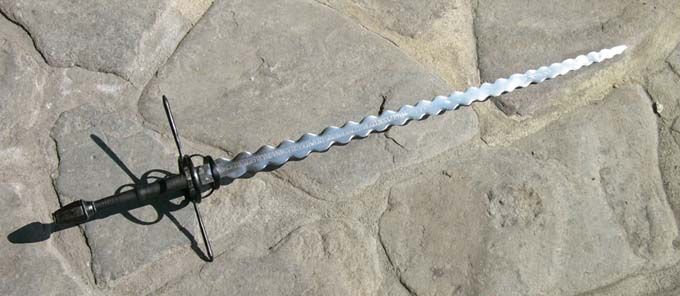
7. The Flammard was more than just a fancy-looking sword, its undulating blade gave a warrior the upper-hand in a one-on-one fight
In German, the name literally means “flame sword” in German. And it looks as good as it sounds. But the wavy metal blade was not designed for aesthetics alone. In the right hands, the flammard was a highly-effective weapon. According to accounts of the time, the wave-bladed weapon could cause more damage than a traditional sword, both going into an enemy’s body and, more importantly, coming out of it. Furthermore, the sword’s design also had defensive advantages. The undulated blade would slow down an opponent’s blade; in later years, this has also ensured that it remains a popular fencing weapon.
The majority of flammard swords crafted during the European Renaissance were one-handed weapons. Most were lightweight rapiers that could be carried around at all times by normal infantrymen and bodyguards. At the same time, however, some double-handed flammards were also built. These much-larger versions, with their undulating blades, were terrifying, capable of killing several opponents with one mighty swing. But only specially trained, extra-strong soldiers could wield a double-handed flammard – and they were usually mercenaries who asked for double the money for their extra power.
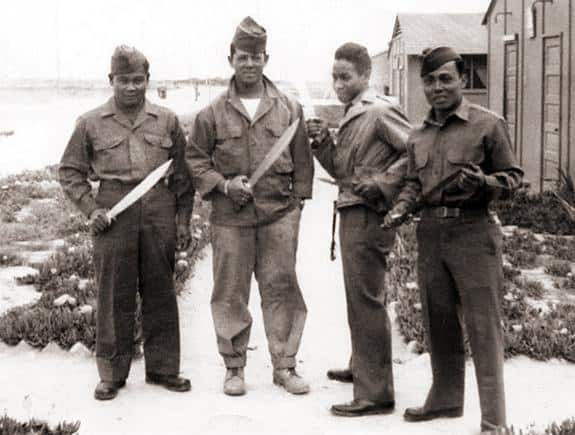
6. The Bolo was hardly sophisticated, but it was highly lethal, used by Philippine guerrillas to kill occupying soldiers silently and efficiently
Throughout the Philippine-American War, the bolo was also widely-used by Filipino guerrillas, many of whom lacked modern weaponry. They would sneak up on unsuspecting soldiers and use the short, tough blade to stab their enemies in the abdomen or the neck. Then, some 50 years later, Filipino fighters would again stop using their bolo knives for farming and instead use them for killing soldiers of the occupying Japanese Imperial Army. So important was the simple but effective weapon to the resistance that a Moro-Bolo Battalion was established and became one of the most-feared units in the jungles of the Philippines.
So effective was the bolo as a weapon for close-quarters combat that American soldiers took knives with them once the Philippine-American War had been lost. Famously, Henry Johnson was armed only with a bolo when he fought back against a German raid on the American trenches during the First World War. His heroism led him to being awarded a posthumous Medal of Honor and was all the more remarkable given that he was an African American solider at a time when racism was rife in the armed forces.
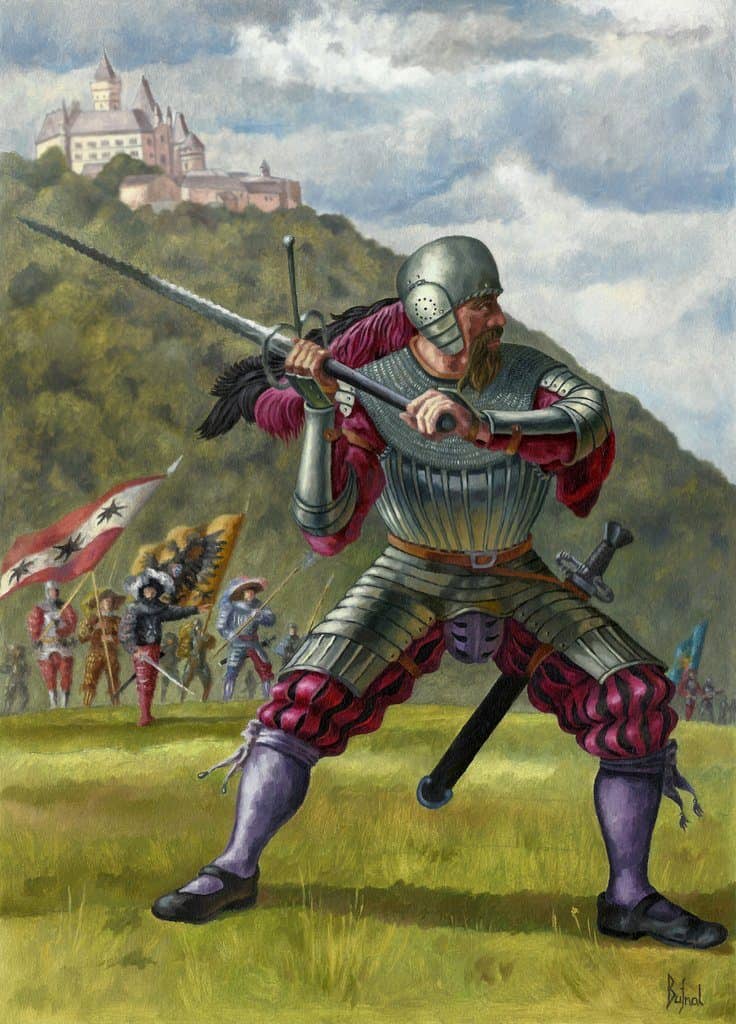
5. A Zweihander sword was so big and heavy that not every soldier could wield one – but those who did could take off several heads with a single swing
According to most military historians, the first zweihander (literally ‘two-hander’) swords started to emerge towards the end of the 15th century. They grew out of the more-traditional longsword, taking this weapon type’s strengths to new extremes. Some were more than 2 metres long and weighed as much as 6.5 kilos. This gave them a huge reach, and so the men armed with them were usually deployed against pikemen. As well as their formidable reach, this type of sword was also immensely powerful – but only in the hands of a soldier strong enough to use it properly.
According to one legend, the Landsknechte, an elite group of German mercenaries who charged huge sums for their services during the Italian Wars of 1494-1559, could decapitate several enemy soldiers with a single swing. For the most part, however, soldiers armed with Zweihander swords would aim for pikes rather than heads. These specialist warriors – who earned double the rate of ordinary mercenaries – swung their mighty weapons, knocking spiked poles to one side so that others could advance from behind them. Some swords even had parrying hooks fitted towards the hilt, making them even more effective against pikes.
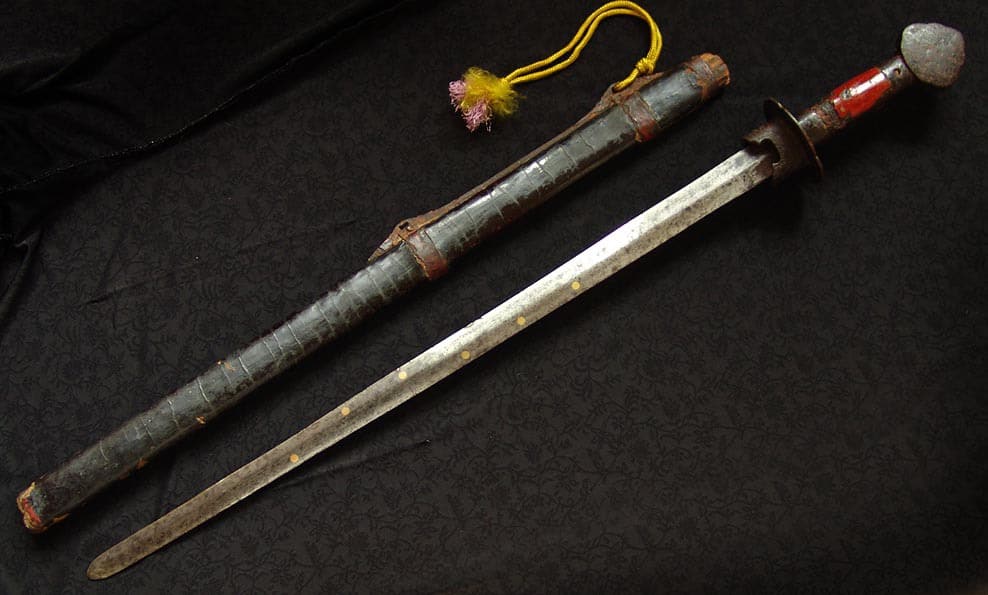
4. The Chinese jian was the ultimate in battlefield versatility, used by specialist warriors to cut and thrust – in a ‘gentlemanly’ manner that is
It was known as the “Gentleman of Weapons” in Chinese folklore, and in the legends of the Taoist Immortals, several notable warriors have the jian as their prime weapon. While it may not have been as powerful or as strong as a Viking broadsword or as agile and flexible as a Renaissnace-era rapier, this Chinese sword was hugely versatile. Not only could it be used for thrusting and stabbing, it was also ideal for cutting – and, indeed, a whole sport grew out of trying to make the most precise cuts possible using a jian.
The jian, a double-edged straight sword, started to emerge in China in around 500BC. Over the centuries, the size and weight of the weapon has varied. However, for more than 2,500 years, the essential design of the jian has remained the same. While it may look simple, it’s actually finely-crafted. The single blade is really divided into three parts; the top is designed for offensive moves, while the base is crafted for defence. The middle of the sword, meanwhile, can be used for both defensive and offensive moves, above all, precision cutting.
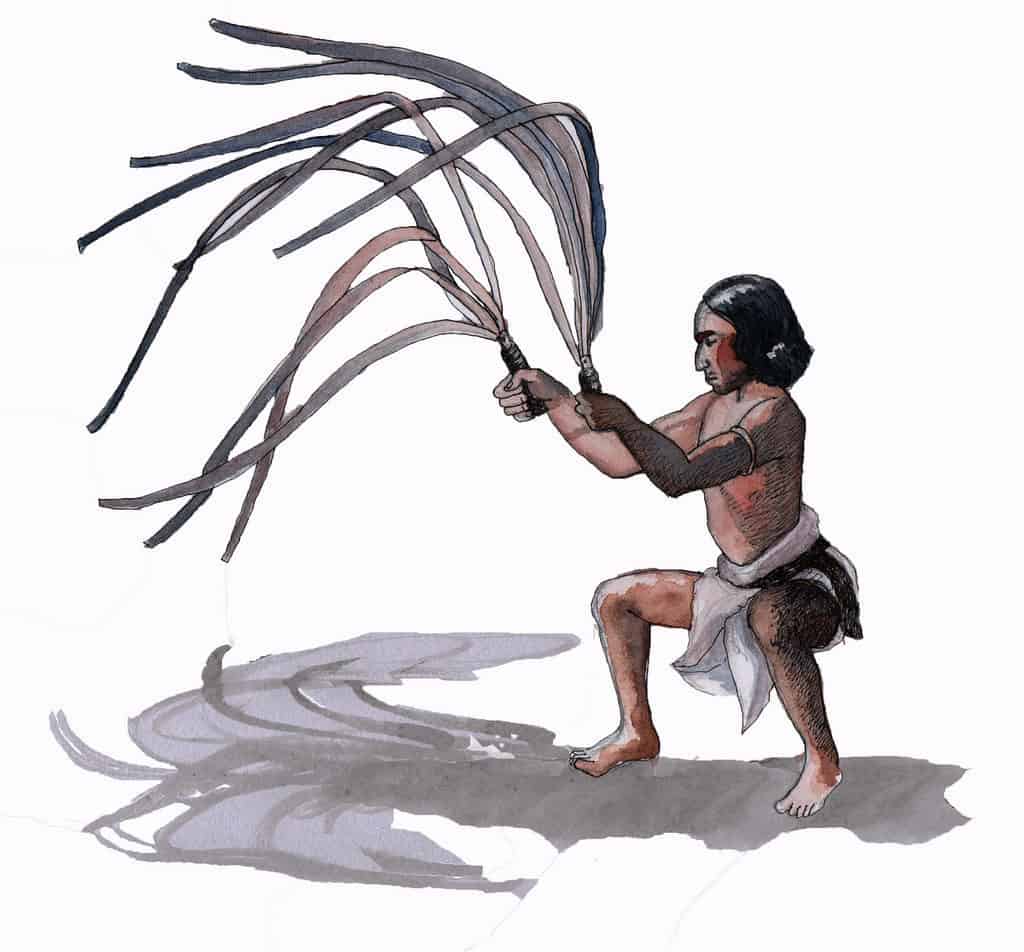
3. The Urumi was a cross between a sword and a whip. It took years to master and could be used to kill several opponents at once
Quite when the first urumi emerged is the source of much debate. According to some experts, the first such weapons might have been used during the Sangam Period, 1,800 years ago. It was undoubtedly unique to modern-day southern India and Sri Lanka. And, while the precise design of the weapon may have varied, the principle was the same. The urumi is composed of flexible metal blades attached to a single handle. When not in use, the blades – often more than 30 – are wrapped around the waist like a belt. And then, when in use, it is held like a sword but deployed more like a whip.
It was said that a warrior needed to master both weapons before he could even attempt to fight with an urumi. Without good whip skills, an untrained fighter was just as likely to injure, even kill, himself than he was to hurt his enemies. But for a trained fighter, there was arguably no better weapon for taking on multiple opponents, especially if one was held in each hand, as was the style in modern-day Sri Lanka. While it could not thrust, the urumi is a devastating slashing weapon. Today is used in martial arts displays against opponents equipped with small shields.
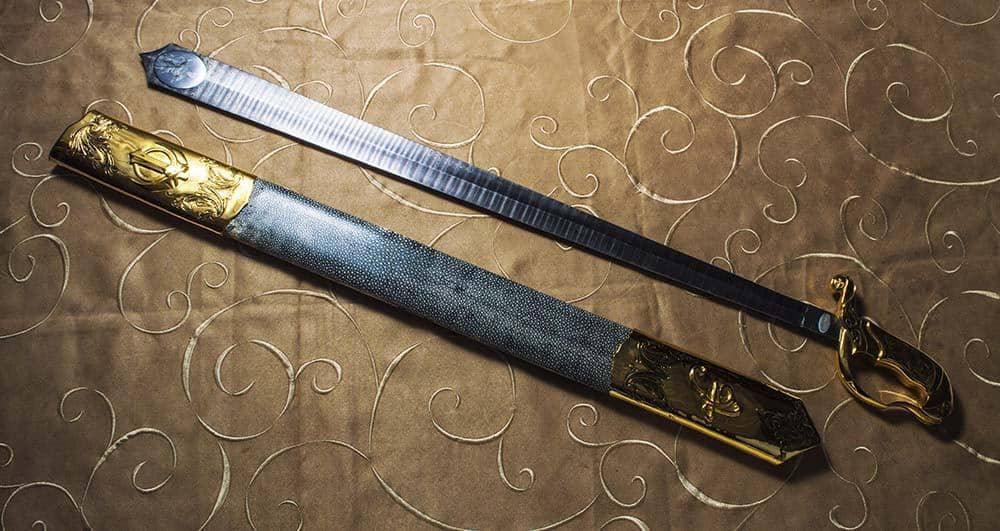
2. The Khanda sword was used by the warriors of the Indian subcontinent for centuries and is now a spiritual object as well as a weapon of war
It’s believed that the first examples of the khanda sword started to emerge across the Indian subcontinent during the Gupta period, between 320-550AD. Even then, the design was as simple as it was effective. The top is blunted, making it useless for stabbing. However, the sharp sides made it a formidable cutting weapon and it would have been wielded by unhorsed soldiers, including elite warriors and rulers. Many khanda swords had reinforced spines running down the blade, making them even more deadly.
From the 18th century on, many khanda swords came to be fitted with hand and finger guards and even basket hilts – the latter likely influenced by European weaponry. The swords also became increasingly more intricately-decorated. This was entirely in fitting with their significance, especially to Sikhs. For them, the khanda was a symbol of bravery and sacrifice. Legend has it that Rajput warriors would grip their swords with two hands when surrounded by enemies. They would then lift it above their heads and chop downwards, hoping to take out as many enemy soldiers as possible before dying a noble death.

1. The Miao Dao was so popular with Chinese warriors that some even took the sword into battle during the Second World War
It wasn’t only the Japanese officers who went into battle with their samurai swords as late as the 1940s; their opponents in the Second Sino-Chinese War had ferocious bladed weapons of their own. Indeed, the Miao Dao was wielded by many Chinese troops during the bloody conflict, which raged from 1937 to 1945. While it may have been no match for a machine gun or grenade, the sword is deadly close-up, as Japanese soldiers learned to their cost.
Meaning ‘sprout saber’ due to the way in which it resembles a sprouting plant, the Miao Dao is similar to a European military sabre crossed with a traditional Japanese sword. Most measure around 55 inches, of which 38 inches is the slightly-curved plated steel blade. The long hilt meant that it could be swung with two hands, though it was light enough for a strong soldier to attack one-handed. Alongside being used in the heat of battle, contemporary histories of the war also reveal that the Miao Dao was also used to execute captured enemy soldiers, usually by decapitating them.

